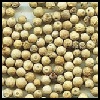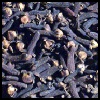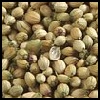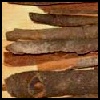Spices
Use of spices by human being has been recorded from pre-historic period. Archeologists
estimate that by 50,000 B.C. primitive man had discovered that parts of certain aromatic
plants help make food taste better. Spices were some of the most valuable items of
trade since ancient time. References to spices have been found in Bible and other
religious books and epics. Spices were the primary reason that Portuguese navigator
Vasco Da Gama sailed to India.
Cinnamon and cassia were treasured spices. Medical documents of about 1550 BC record
use of anise, caraway, cassia, cardamom, mustard, sesame, fenugreek, saffron and
other spices by Egyptians. The spices were not only used to flavor foods but for
body ointments, anointing oils and ceremonial functions including important burial
rites.
For centuries, since 950 B.C. (or earlier), the Arabs were the masters of this lucrative
trade. The Arabs kept rest of the buyer community completely in the dark about the
source of many of the Oriental spices. They bought their spices from the Indians
and from Chinese and Javanese merchants but kept it secret and would tell fabricated
tales of the dangers they faced in gathering the spices in mysterious far-off lands.
The Roman started sailing to India from Egypt in the first century AD. Romans carried
back spices with them and became extravagant users of spices for perfumes, cosmetics,
medicine and cooking.
Around the same time, the Silk Route came into use. This overland route from China
varied in its track depending on the political stability and taxes. However, with
Han emperors extending their control over the central Asia, the merchants traveled
to Rome in relative safety, carrying with them silk, jewels, cassia, cumin and ginger.
Spices became a natural product extension for Pargan in its trading activities due
to its presence in the spice growing nations and a good no. of clients also interested
in buying spices.
Following are the details of spices dealt-in by Pargan:













